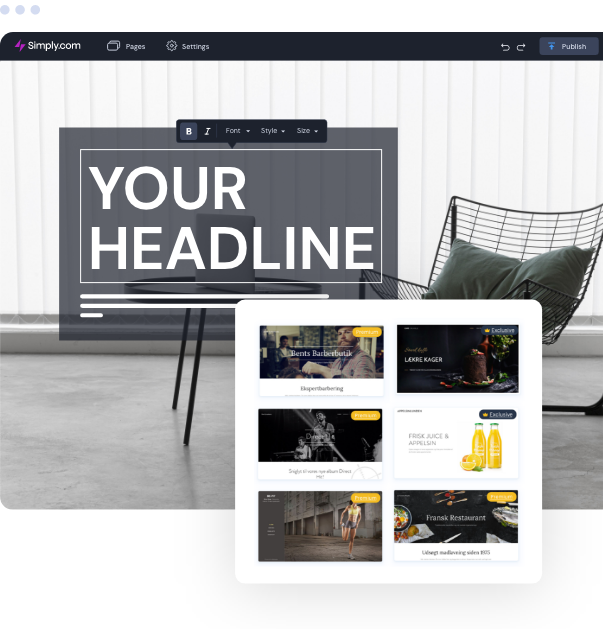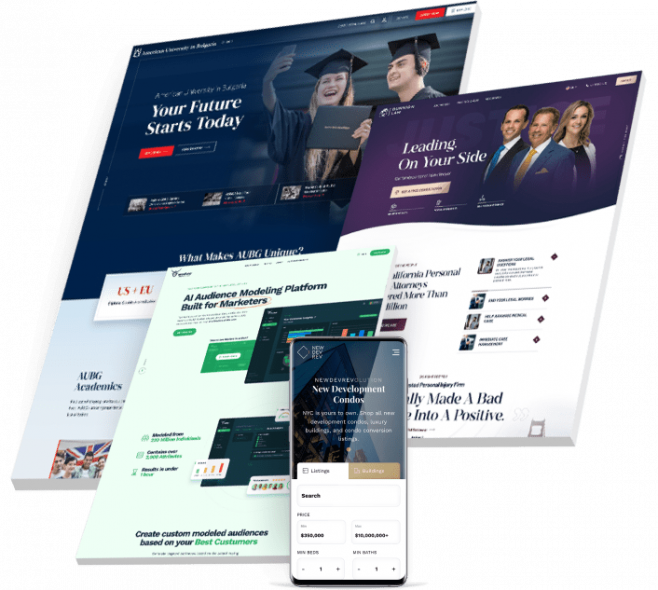The Future of Digital Marketing: Welcoming Modern Website Design Trends
The Future of Digital Marketing: Welcoming Modern Website Design Trends
Blog Article
Secret Strategies for Applying User-Centric Internet Site Design to Increase Involvement
When taking into consideration the execution of user-centric site layout, specific approaches are critical in improving involvement. Complete research study right into customer demands and preferences forms the foundation, leading the creation of user characters to educate layout choices. Individualizing material improves individual satisfaction, and robust accessibility functions broaden reach.
Recognizing Individual Needs
Recognizing customer needs is an essential action in the procedure of user-centric website design. Strategies such as surveys, meetings, and customer testing can provide valuable qualitative and quantitative information concerning exactly how individuals engage with the website.
Examining this data allows designers to develop in-depth customer personas that represent the different segments of the target market. These personalities assist inform design choices by highlighting particular customer objectives and difficulties, leading the growth of features that resolve these requirements successfully. Understanding the context in which individuals run-- such as their setting, tool preferences, and time restraints-- can further fine-tune the style technique.
Empathy plays a critical function in this process, enabling designers to see the web site from the user's point of view. By prioritizing customer needs, the style process comes to be a lot more focused, avoiding the incorporation of unneeded components that might clutter the individual experience. Inevitably, a deep understanding of user needs is critical in crafting a website that is both useful and significant.
Creating Intuitive Navigating
Having established a comprehensive understanding of individual needs, the following action in user-centric web site style includes producing instinctive navigating. Reliable navigating is basic to customer contentment, affecting exactly how easily users can find details and full tasks. To accomplish intuitive navigation, designers have to prioritize simpleness and clarity, making sure that the navigating framework is consistent and rational throughout the site.
Organizing content right into a clear hierarchy is critical. Website Design. Using acquainted tags and symbols can assist individuals effortlessly, decreasing cognitive load and improving the overall customer experience. A properly designed navigating bar must be prominently placed, allowing users to recognize their existing location and quickly explore other sections of the website
It is also essential to incorporate interactive components such as breadcrumbs and search functionalities to help users in browsing complex websites. These functions give additional paths and boost the access of web content, satisfying different individual preferences and behaviors.
Examining navigating with actual customers is vital to recognize possible pain factors and ensure performance lines up with customer expectations. Regular comments loopholes and iterative enhancements can assist preserve a reliable navigating system that adjusts to progressing customer needs, eventually increasing involvement and satisfaction.
Creating Receptive Interfaces
Inevitably, creating receptive interfaces is a critical facet of modern internet style, ensuring that sites are easily accessible and useful throughout a wide range of tools and screen dimensions (Website Design). This versatility is essential in a landscape where users accessibility web content through smartphones, desktop computers, laptop computers, and tablet computers, each with differing resolutions and alignments. The key goal of receptive style is to boost customer experience by maintaining ideal readability and functionality, no matter the gadget used
To accomplish this, internet developers utilize flexible grid formats, fluid pictures, and CSS media inquiries. Flexible grids allow internet site elements to resize proportionally, while liquid pictures ensure visuals scale properly without shedding high quality. Media questions play a crucial function by applying various designs based on the gadget's characteristics, such as width, height, and alignment, hence customizing the layout to the individual's display.
Additionally, receptive user interfaces add to improved search engine optimization (SEO) by using a seamless customer experience, which consequently can lower bounce prices and boost website involvement. In summary, adopting responsive style is not just a technological factor to consider yet a crucial technique for cultivating a user-centric web setting that meets the needs of a varied audience.

Individualizing Web Content Experience
Individualizing material experience is a critical element of user-centric internet site design that entails customizing web content to satisfy the one-of-a-kind choices and habits of individual customers. This approach not only enhances user fulfillment yet likewise fosters much deeper engagement, as visitors are more probable to communicate with material that resonates with their needs and passions. By leveraging information analytics and user comments, businesses can recognize patterns and patterns that educate the modification of web material.
Including personalization techniques can vary from simple adjustments, such as advising products based on surfing history, to much more advanced techniques like vibrant content that adapts in real-time to a customer's her explanation interactions. Individualized touchdown pages can significantly enhance conversion rates by giving users with appropriate details and uses that straighten with their previous tasks and preferences.
Furthermore, utilizing man-made knowledge and equipment discovering can further refine material customization by continuously gaining from individual habits and adjusting to arising trends. This not only boosts the user's trip yet additionally develops brand loyalty, as consumers really feel understood and valued. Ultimately, customizing the material experience is an important approach for organizations aiming to create a much more engaging and purposeful communication with their target market.
Enhancing Ease Of Access Attributes
Enhancing ease of access features is a basic aspect of user-centric site design, making certain that electronic content is functional by everyone, consisting of people with disabilities. This technique not only abides with legal criteria such as the Americans with Disabilities Act (ADA) and the Web Material Availability Standards (WCAG) yet likewise significantly broadens a site's target market reach. By incorporating features like keyboard navigating, screen visitor compatibility, and this website alternate text for pictures, web sites end up being much more comprehensive, giving a smooth experience for individuals with visual, auditory, or motor disabilities.
Integrating receptive style aspects is important, assisting in gain access to on numerous devices and display sizes, consequently accommodating individuals with various preferences and demands. In addition, contrast proportions and message dimension adjustments can improve readability for individuals with visual challenges. Providing succinct and clear material structure, such as headings and checklists, aids comprehension and navigating, especially for individuals with cognitive handicaps.
Regular access audits must be performed to identify and rectify prospective obstacles, making certain continued conformity and usability. By focusing on accessibility, companies not only foster inclusivity however also enhance general individual involvement and complete satisfaction, eventually driving greater conversion prices and enhancing brand loyalty.

Final Thought
Integrating user-centric design strategies substantially enhances website interaction by prioritizing the needs and choices of users. Detailed research promotes the production of user personalities, assisting targeted layout decisions. Instinctive navigation and receptive interfaces enhance use and access across tools. Individualizing material based on user actions increases complete satisfaction, while durable availability attributes expand audience reach. Jointly, these approaches create a significant on the internet experience, fostering deeper engagement and interaction with the site.
Detailed research into individual demands and preferences creates the structure, guiding the production of individual identities to notify style selections. Continue Methods such as surveys, interviews, and user screening can supply valuable qualitative and measurable information concerning exactly how customers communicate with the internet site.
By focusing on user needs, the layout procedure becomes a lot more concentrated, avoiding the addition of unneeded aspects that can mess the user experience. Efficient navigating is essential to customer complete satisfaction, influencing just how easily individuals can find info and full jobs. The usage of acquainted labels and icons can lead individuals effortlessly, lowering cognitive tons and boosting the overall customer experience.
Report this page